 Your new post is loading...
 Your new post is loading...
During this time of significant educational change, we are forced to ask ourselves, what is the role of the teacher?
Teachers continue to be central to learning, but the role is changing significantly. Our children still need to develop real skills and real knowledge, but they also need to be self-reliant, resilient, and fully capable of re-inventing themselves. This means students must learn how to self-direct their learning.
So if students are self-directing their learning, what's the role of the teacher?
Teachers build the curriculum/lessons with the individual student based on his/her needs and interests rather than move through a fixed curriculum en masse.
Teachers provide the experiences and tools to access new knowledge in specific areas of interest as facilitators of individual pathways, rather than being a provider of the content or expert in one or every area,Teachers become experts in how people learn, not only in teaching.
Teachers support a community of learners in teams, possibly of multiple ages, rather than alone in classrooms with fixed grades of students.
Teachers have more autonomy over their daily schedule, and can be flexible to adjust their schedules to support student needs.
Teachers provide opportunities for real-world, connected, practical learning rather than isolated academics.
These are the types of changes in the teacher's role that are fundamental to developing students who are capable of independent learning and reinvention in a rapidly changing world.
Learn more / En savoir plus / Mehr erfahren: https://gustmees.wordpress.com/2013/05/25/so-whats-the-change-for-teachers-in-21st-century-education/
Via Gust MEES
What is professional development? It is pretty much anything that helps one develop professionally. At the heart, professional development is about growth and learning. In the field of education, it seems like many quickly think of educational opportunities that mimic what they see in their schools. As a result, they turn professional learning and education into schooling. The problem with that is that schooling is too limiting. In this age, there are many other exciting and high-impact learning opportunities for teachers that extend beyond traditional notions of schooling. When we hear the phrase “professional development,” certain practices likely come to mind, things like in-services and conferences. In the digital age, there are countless other opportunities for professional development and restricting one’s thoughts to just a few options limits our insight into what is possible for our students. With that in mind, here is a brainstorm of 20 options available to educators today. This is far from an exhaustive list, but it is enough to start exploring the possibilities. Feel free to suggest others in a comment to this post. Learn more: Professional Development: WHY EDUcators And TEACHers Can’t Catch UP THAT Quickly AND How-To Change It LEARNing To LEARN For MY Professional Development | I Did It MY Way
Via Gust MEES, Mark E. Deschaine, PhD
“When we have a rich meta-strategic base for our thinking, that helps us to be more independent learners,” said Project Zero senior research associate Ron Ritchhart at a Learning and the Brain conference. “If we don’t have those strategies, if we aren’t aware of them, then we’re waiting for someone else to direct our thinking.”
Helping students to “learn how to learn” or in Ritchhart’s terminology, become “meta-strategic thinkers” is crucial for understanding and becoming a life-long learner. To discover how aware students are of their thinking at different ages, Ritchhart has been working with schools to build “cultures of thinking.” His theory is that if educators can make thinking more visible, and help students develop routines around thinking, then their thinking about everything will deepen.
His research shows that when fourth graders are asked to develop a concept map about thinking, most of their brainstorming centers around what they think and where they think it. “When students don’t have strategies about thinking, that’s how they respond – what they think and where they think,” Richhart said. Many fifth graders start to include broad categories of thinking on their concept maps like “problem solving” or “understanding.” Those things are associated with thinking, but fifth graders often haven’t quite hit on the process of thinking. Learn more / En savoir plus / Mehr erfahren: https://gustmees.wordpress.com/2015/07/19/learning-path-for-professional-21st-century-learning-by-ict-practice/ https://gustmees.wordpress.com/2014/10/03/design-the-learning-of-your-learners-students-ideas/
Via Gust MEES
We are in the early innings of a Second Machine Age---one relying on fewer people and more technology---yet we’re largely educating students for a bygone e
The Blended and Online Assessment Taxonomy Infographic presents types of activities and grading and feedback criteria to help you plan better assessments.
Via Miloš Bajčetić, Yashy Tohsaku, Gust MEES
The communication explosion reaches its peak when you explore the endless avenues running through TED Talks. Moreover, the title educator embodies many forms within these talks. So it’s precisely for this reason that any educator benefits from so many of these talks. Each speaker reveals his or her passion of a view or a subject with the enthusiasm of a first-year teacher.
Whether we have fully integrated technology or not, few of us can deny that learning technologies can revolutionise language learning and teaching; we can find information at the click of a button, create content and share it with the world, communicate and collaborate beyond the boundaries of our classrooms, have a Personal Learning Network and be inspired to become lifelong learners.
Via Gust MEES, Dean J. Fusto
The evolution of the web from Web 1.0 to Web 2.0 and now to Web 3.0 can be used a metaphor of how education should also be evolving, as a movement based on the evolution from Education 1.0 to Educa...
Work on this Bill of Rights & Principles began in Palo Alto, California, on December 14, 2012. We convened a group of people passionate about learning, about serving today's students, and about using every tool we could imagine to respond better to the needs of students in a global, interactive, digitally connected world. We believe that online learning represents a powerful and potentially awe-inspiring opportunity to make new forms of learning available to all students worldwide, whether young or old, learning for credit, self-improvement, employment, or just pleasure. We believe that online courses can create "meaningful" as well as “massive" learning opportunities. We believe that our culture is increasingly one in which learning, unlearning and relearning are as fundamental to our survival and prosperity as breathing. To that end, we believe that all students have inalienable rights which transfer to new and emerging digital environments.
Via Gust MEES
Schools are doing Education 1.0; talking about doing Education 2.0; when they should be planning Education 3.0 http://t.co/LelZBpGWHo
|
What would you say are a few of the biggest myths about growth mindset?
OK, myth No.1 is the myth that it’s all about effort, and that you instil it by praising effort. Effort is one factor that leads to learning. So the ultimate value is growth, progress, learning. And effort is one thing that leads there but there are many other things – strategies, using resources, getting advice, guidance and mentorship, and when people leave that out and just praise effort, it’s not transmitting a growth mindset. Adults have nagged children for centuries to try harder. That’s not a growth mindset, it’s an adult nagging a child to try harder!
Also, we find that when teachers think it’s just about effort and praising effort they may praise effort that isn’t even there, or that’s not effective. So if a child tries hard at something and you say ‘great job, you tried hard’, but they didn’t make progress, they didn’t advance, you’re actually conveying a fixed mindset because you’re saying ‘great effort, I didn’t really expect you to do that, and I don’t expect you to do that, so I’m trying to make you feel good about not doing it’. So we need people to understand that it’s appreciating a variety of process variables that lead to learning.
The second myth is that you can teach students a lesson on growth mindset and put a poster up in the front of the room, and that’s that, that they will have a growth mindset from then on. And we know if the teacher doesn’t then embody a growth mindset, if teachers don’t embody growth mindsets in their teaching practices, in the way that they give feedback when the child is stuck, and the way they present a new unit, in the way that they give opportunities for revision and growth of understanding – if they don’t embody that growth mindset, they are not teaching it. And in fact, if their behaviour contradicts the poster at the front of the room, then maybe they’re doing a disservice. Learn more / En savoir plus / Mehr erfahren: http://www.scoop.it/t/21st-century-learning-and-teaching/?&tag=carol+dweck http://www.scoop.it/t/21st-century-learning-and-teaching/?&tag=Growth+Mindset
Via Gust MEES
What is professional development? It is pretty much anything that helps one develop professionally. At the heart, professional development is about growth and learning. In the field of education, it seems like many quickly think of educational opportunities that mimic what they see in their schools. As a result, they turn professional learning and education into schooling. The problem with that is that schooling is too limiting. In this age, there are many other exciting and high-impact learning opportunities for teachers that extend beyond traditional notions of schooling. When we hear the phrase “professional development,” certain practices likely come to mind, things like in-services and conferences. In the digital age, there are countless other opportunities for professional development and restricting one’s thoughts to just a few options limits our insight into what is possible for our students. With that in mind, here is a brainstorm of 20 options available to educators today. This is far from an exhaustive list, but it is enough to start exploring the possibilities. Feel free to suggest others in a comment to this post. Learn more: Professional Development: WHY EDUcators And TEACHers Can’t Catch UP THAT Quickly AND How-To Change It LEARNing To LEARN For MY Professional Development | I Did It MY Way
Via Gust MEES, Dean J. Fusto, Mark E. Deschaine, PhD
This presentation explores the move from pedagogy to andragogy to heutagogy and from instructivism to constructivism to connectivism – all within the context o…
Via Mark E. Deschaine, PhD, Kim Flintoff
We may graduate from school, but we never stop learning. New jobs, new roles, new relationships: all require the acquisition of new knowledge. To stop learning is to stop improving.
Despite its importance, so many of us develop bad habits and faulty techniques that undermine our ability learn effectively, says Nate Kornell, an associate professor of cognitive psychology at Williams College who studies learning strategies.
Below, Kornell outlines three fundamental principles to learn by.
1. Embrace discomfort 2. Stop cramming 3. Make connections Learn more / En savoir plus / Mehr erfahren: http://www.scoop.it/t/21st-century-learning-and-teaching/?tag=Effective+Learning
Via Gust MEES, Dean J. Fusto
Teaching means…
…to help another person understand.
…to help another person understand why something is worth understanding.
…to help another person responsibly use what they know.
…to artfully connect students and content in authentic contexts.
…to cause change.
…to cognitively agitate.
…that relationships with children are the bedrock for everything else.
…to be able to see individual faces, needs, opportunities, and affections where others see a classroom of students.
…that you should always know the difference between what you taught and what they learned.
…to model curiosity.
…that students will likely never forget you (or that one thing you said, the time you lost your temper, how you made them feel, etc.)
…to know what it actually means to “understand.”
…to create a need for students to reorganize and repack their intellectual baggage.
…to self-critique your own biases, blind spots, and other “broken perceptions”
…to make dozens of crucial decisions on the fly not per day or class but per minute.
…that you’re going to be needed every second of every day in some important way.
…to adjust the timing, general ‘form’, and complexity of a given content so that it seems ‘just in time, just enough, and just for me’ for each student.
…to help students play with complex ideas in pursuit of self-knowledge and personal change.
…to be able to create an awesome lesson plan and unit–and to know when and why to ditch that plan and unit.
…to know the difference between teaching content and teaching thought.
…that you need to know your content well enough to teach any concept, skill, or standard within it 20+ different ways.
…that you’re going to work closely with people that will think differently than you, and learning to bridge those gaps with diplomacy could make or break your happiness
…to help students transfer understanding of academic content to authentic circumstances.
…to accept certain failure.
…to be a lifelong learner yourself.
…to disrupt social imbalances, inequities, and knowledge and skill gaps
…to confront your own weaknesses (technology, pedagogy, content, collaboration, organization, communication, etc.)
…to really, truly change the world (for the better or the worse).
…that you’re going to need a lot of help from everyone.
…to operate under unclear terms for success.
…to explain, model, and connect.
…to change, change, change.
…that in terms of sheer mathematical probability, you’re not going to be teaching for more than five years (if you’ve already passed that, congratulations!)
…that your ‘comfort zone’ no longer matters.
…your teaching program probably didn’t prepare you well (e.g., your ability to empathize and engage and design are more important than anything else you learned in said program).
…to practice humility.
Via Miloš Bajčetić, Gust MEES, Inma Contreras
I'm presenting a keynote speech in Brisbane for EduTech next week, and the theme for my talk is 'Meet Learner 2.0'. I want my audience of mainly higher education teachers to think about the cohort of students that is now coming through the doors of universities. Generally they are young people who have no memory of the last century (the one we were all brought up and educated in), and have been immersed in technology their entire lives. They are younger than the Internet and mobile phones, and they don't recall a time when there was no Google or Facebook.
Managing the interface between people and technology. Two weeks ago I participated in the annual ANZSOG Master Class held at the Melbourne Business School and facilitated by Professors John Alford, Jon Brock and Mike Vitale. The workshop brings together academics from the public policy space and this year the first day was spent focusing on the potential impact of online education and how current teaching practitioners are working within this area. As a part if this I was asked to talk about my own observations and, as I listened to the conversations around me, and thought of the people that we teach within ANZSOG, it reinforced in my mind that the most fundamental education that is needed across the board is to teach digital literacy in order to facilitate digital competency.
The NMC Horizon Report > 2014 Higher Education Edition is a collaborative effort between the NMC and the EDUCAUSE Learning Initiative (ELI), an EDUCAUSE Program. This eleventh edition describes annual findings from the NMC Horizon Project, an ongoing research project designed to identify and describe emerging technologies likely to have an impact on learning, teaching, and creative inquiry in education. Six key trends, six significant challenges, and six emerging technologies are identified across three adoption horizons over the next one to five years, giving campus leaders and practitioners a valuable guide for strategic technology planning. The format of the report is new this year, providing these leaders with more in-depth insight into how the trends and challenges are accelerating and impeding the adoption of educational technology, along with their implications for policy, leadership and practice.
When it comes to an understanding of the term “literacy” most people understand it as the ability to read and write in an effort to communicate, understand and learn. That has been the accepted und... A literate educator in the 20th Century is not the same as a literate educator in the 21st Century. Our education system is loaded with many 20th Century holdovers. Most are great people, and good teachers, but they are illiterate in 21st Century terms. We need not cast them aside. They are valuable and revered sources and educators. We need to support them with methods to upgrade their literacies. It must be a priority.
Via Gust MEES
For many curious folks, their impassioned yearning to soak up as much of the world’s wonders as possible completely transcends the boundaries of a traditional classroom. Armed with an insatiable lust for knowledge, they set out to acquire it on their own terms, although a few pointers obviously can’t hurt before departure and landing! Not every possible technique will necessarily stick with all self-motivated learners, of course, but the only way to find out is to test them. Try some of the following and experiment with what works in a more independent educational setting.
Via Gust MEES, Elizabeth E Charles
We have been educated in a 1.0 education model, we are teaching in a 2.0 model but our students are living in a 3.0 model. These three models chronicle the major paradigmatic shifts that education has witnessed over the last century. They also represent, in an ironical way, the huge abyss between the actual needs of our students and what is actually being delivered to them in schools.
Below is a very interesting chart created by Dr John Moravec in which he compares between the three models we mentioned above. Have a look and share with us what you think of it. Enjoy.
Presentation about moving from Education 1.0 to Education 3.0; from pedagogy to andragogy to heutagogy; from instructivism to constructivism to connectivism in
Via Gust MEES
|



 Your new post is loading...
Your new post is loading...

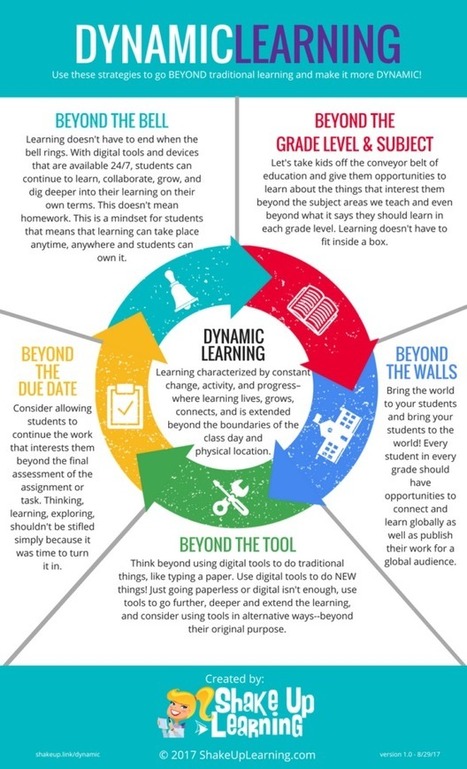



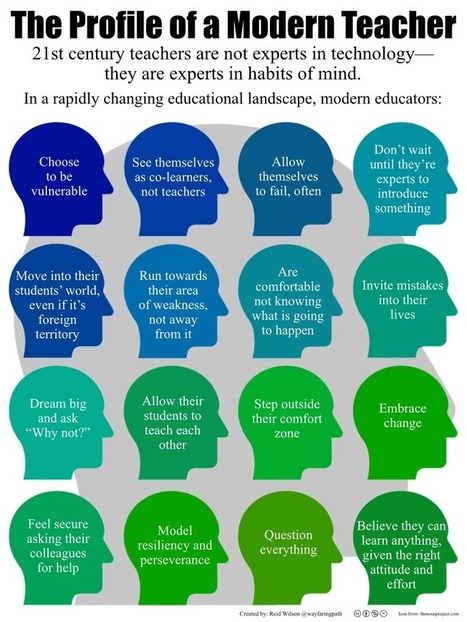




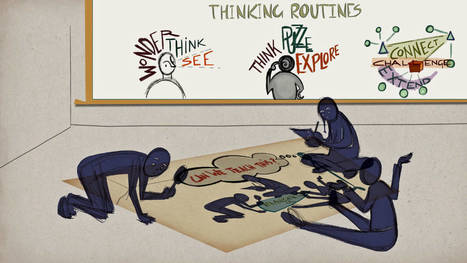









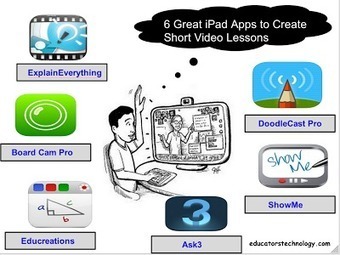







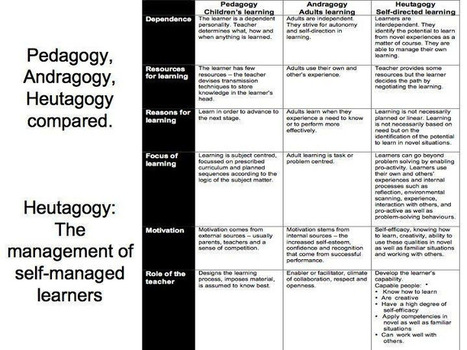
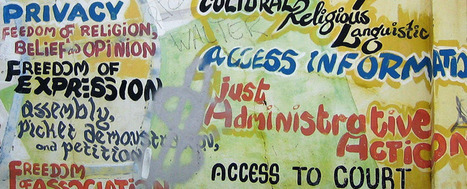
![Schools are doing Education 1.0; talking about doing Education 2.0; when they should be planning Education 3.0 [Gerstein] | Information and digital literacy in education via the digital path | Scoop.it](https://img.scoop.it/ZbZJoXmP7v8WQY2mjz22Fjl72eJkfbmt4t8yenImKBVvK0kTmF0xjctABnaLJIm9)



























